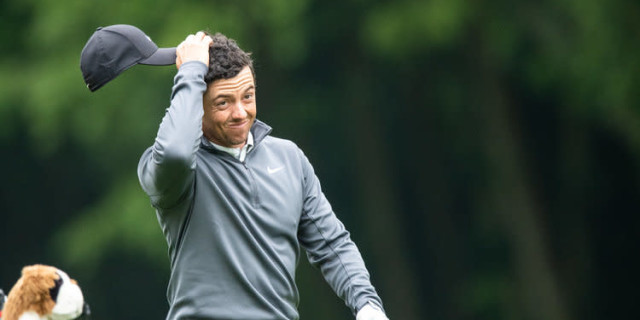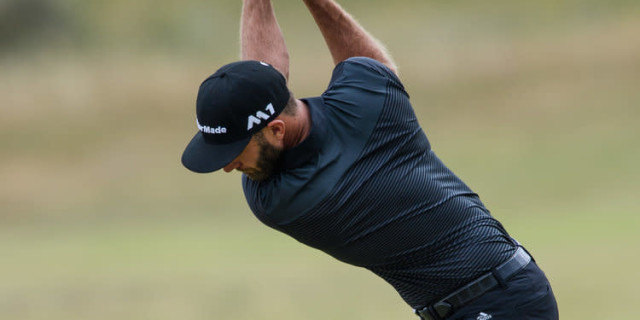
It's Time to Make Things Tougher for Tour Pros
WHEN life gets back to normal and we all return to our beloved golf courses we may have to accept the fact that they will not be as pristine as they were when we were ordered to stop playing. As things stand, greenkeepers have been told that they can continue with essential course maintenance, although it is not clear exactly what that means. And, in any event, that guidance is likely to change as things develop.
In the real world, the courses that club golfers enjoy are never going to be as perfect as those that we see on the PGA, LPGA and European Tours. Tour professionals are spoilt. And perhaps this is the ideal time to move them back into that real world the rest of us inhabit. Why should the courses they play be picture-perfect?
As club golfers we revel in the challenge of being out there, trying to achieve the best scores we can on the home course that we have grown to love, warts and all. We accept that not all divots will be replaced. We will lose golf balls in the rough because, unlike the pros, we don’t have ball spotters, just a short-sighted playing partner who is never quite sure where the ball finished up. We know that sometimes we are going to step into a bunker and find that that the person who was in there before us hasn’t raked the sand properly - every single one of us has had to find a way to extricate a golf ball from a footprint. And it is just the rub of the green when a putt that seems destined for the hole suddenly bobbles off line because the green is not like a snooker table. It is part of the challenge.
Our greenkeepers do a wonderful job and we take them for granted. If you have ever been a member of course that has not been looked after properly you will know what I mean. It is only when greens are bumpy, fairways are unkempt, or bunkers don’t have enough sand in them that we give them a second thought. When was the last time any of us ever sought out our head greenkeeper to thank or congratulate him or her for providing us with a perfect golf course? But get it wrong and everybody will be looking for him or her, as well as complaining to the committee, club pro and secretary. And anybody else who will listen.
Imagine what our courses might look like if this crisis continues for, say, three months, as seems utterly inevitable, and greenkeepers are ordered to remain at home. Our fairways will look more like rough, our rough will be knee-high, our greens will no longer be smooth and perfect, and grass will have started to grow in the bunkers. There will be weeds everywhere. Ponds and water features will be overgrown. And that’s without considering what sort of state our practice putting greens will be in.
On the plus side, it might actually provide us with an opportunity to provide players on the PGA Tour with a proper test.

We have been debating the distance issue in the professional game for as long as a Rory McIlroy drive. Players are much fitter and stronger than they were 20 years ago, and golf club and ball technology has improved out of sight. The interesting thing is that average handicaps in the club game have remained fairly static, while we have seen huge differences in the professional game, with average driving distances increasing by more than 20 yards since the 1990s. So, all of a sudden the powers-that-be have decided that something needs to be done. They are talking about changes to the golf ball as a starting point, and they are also looking at what might be done to rein in club technology.
It is pretty obvious that something needs to be done to address this issue but the solution may not be as radical as some believe. I have always thought that the answer to this conundrum is fairly simple and I make no apologies for using this an excuse for returning to this subject.
No matter what the likes of Jack Nicklaus and Gary Player have to say on this subject (yes, I know they have won a few more majors than me but that doesn’t mean they are always right), I firmly believe that there is no need to introduce golf balls that don’t fly as far and there is no need to tamper with club technology.
Today’s top pros feel able to stand on a tee and hit the ball as far as they possibly can because they know that, on most PGA Tour layouts, there is little or no penalty for missing fairways. When greenskeepers return to action they will have quite enough on their plate what with sorting out greens and fairways. So why not just leave the rough alone? Why not leave any tufts of grass that appear in bunkers? Make the tour pros work for a living. They are the best in the world so make them think about the way they play the game. If they hit a drive into the rough there should be a penalty to pay.
Yes, we all love to stand behind the likes of Rory, Dustin Johnson and Jon Rahm and watch them stripe the ball 320 yards, but if they cannot find a fairway they should face a proper challenge with their second shots. And why should the bunkers they find be perfectly manicured? Get them thinking about the consequences of wayward shots. It simply doesn’t happen just now, which is precisely why so many courses are being extended to 7,600 yards and beyond.

If the rough is three inches deep, they will have to stop and ask themselves whether a driver really is the right club. In my world it is called course management. And if you call yourself a world-class golfer and you can’t manage your game then I am sorry, you are not a world-class golfer. This could be an opportunity to change the face of the professional game. We love to see birdies but surely the real skill is in being able to scramble for unlikely pars. If you check the PGA Tour’s stats section, there will always be one common denominator - the golfers who lead the scrambling stats will almost always be among the most successful.
The classic example of this was Seve Ballesteros. Throughout his career he struggled horrendously with his driver, hitting the ball to all parts of the course - and many areas that weren’t part of the course for that matter. But the Spaniard was a magician when it came to recovery shots. He would thread golf balls through trees, over trees, under trees. He would play bump and runs from 150 yards. He was a genius from the sand. And he putted like a god. And he didn’t do too badly, did he?
Tiger Woods is the equivalent today. If you were to compile a list of his ten most memorable shots, they would almost all be mind-boggling recoveries from unlikely positions. Ditto Phil Mickelson. The thing that Woods, Mickelson and Ballesteros had in common was imagination, an ability to see shots that others couldn’t - and to be able to execute them.
So will our courses change? Will the rough be left? Of course not. And what a shame that is.

Be part of the action with a selection of unique golf tournament experiences, from playing in a pro-am with the stars to watching the action at golf’s most illustrious events. Whether it’s the Masters or The Open, The Ryder Cup or WM Phoenix Open, build your own bespoke package with the experts at Golfbreaks.com.
What do you think? post your thoughts and feedback on the Golfshake Forum: https://forum.golfshake.com/
Tags: PGA Tour european tour daily picks









